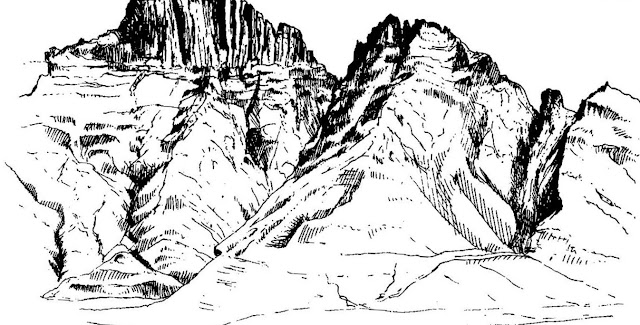Quathlamba
“A
mass of Spears. Named thus by the Zulu warriors before the white man came.
Today called the Drakensberg, Mountains of the Dragon, a name given by the
Voortrekkers. Evocative names, both equally applicable to South Africa’s
mightiest mountain range with its spear-like peaks – reminiscent of the
saw-toothed spine of a gigantic dragon.”
Panorama April 1966
This blog is all about the Drakensberg Mountains and its Wilderness area, South Africa. I have lost my heart and soul to this area and every single time I hike these mountains, I stand in awe all over again at this magnificent beauty.
Hiking adventures, hiking gear reviews, day walks, accommodation, books, articles and photos, all related to these magnificent mountains will feature here.
Should you want to accompany me on a hike, or need some information or advice, please make contact with me. I hope you enjoy the articles.
Please visit the archive for some more interesting stories, photos and reviews.
Please note that all photos on this blog are copyright protected. If you would like to obtain
Photos please make contact with the author, Willem Pelser.
GREAT THINGS ARE EXPERIENCED WHEN MEN, MOUNTAINS AND A
WILDERNESS MEET”
UNKNOWN
MAN AND THE CHANGING
WORLD
Man is only one of
three million species that inhabit this earth, but he already consumes more
food than all land mammals put together. During the Stone Age period, the
world’s human population consisted of some one million people. It took until
1850 to reach one thousand million. Only 80 years later, in 1930, the world’s
human population doubled itself to two thousand million. In 1960 it was
estimated at three thousand million and in 1975 it was expected to reach four
thousand million, with the probability of eight thousand million by the year
2000.
From the outset man was more intelligent than other living
creatures and was therefore able to successfully adapt and overcome the
difficulties confronting him. During the Ice Age, man covered himself in skins
instead of migrating to warmer climes. He then discovered fire and began to
build shelters. From eating berries, fruits and roots, he learned to grow crops
and to rear animals for meat, milk, and skins. He started to trade, which led
to road systems and eventually the building of ships which connected him with
other continents.
With each progression, man has advanced in all fields of life.
Industry and scientific advancement have swept ahead without man learning to
manage his world and its resources more rationally.
Rivers and lakes have silted up through soil abuse and incorrect
farming methods. Usable water is becoming scarcer each day due to silt and
pollution: only 1 percent of the earth’s water supply is now of use to man.
Atomic power can be very useful to man, but already man has
polluted the earth with radio-active dust. Unwise use of poisoning insecticides
resulted in poisoning plants, animals and human beings, too. Factories have
spilt their effluents into rivers, lakes, and seas, until they can take no
more. We burn coal, paraffin and other fuels which not only pollute the
atmosphere but take a long time to replace.
In the early days of the earth, people such as the Red Indians
and the Bushmen lived in harmony with their environment; they knew that their
lives depended on knowledge of sound ecological concepts. Today, we are only
beginning to learn. We cannot treat our planet as if it were limitless in its
supply. All sources of energy come to us from the sun via plants. The coal and
fuel we burn, the petrol we use, have this energy. We are using these, our
natural resources, as if they would never run out, but already we have
over-used some of our sources of energy which took millions of years to form.
BEFORE IT IS TOO LATE
The litter problem in the world is enormous. Millions of tons of
litter have to be disposed of daily. This involves a tremendous amount of
money; also, a large amount of this litter is not recycled and is therefore
absolute waste. Charity begins at home, so must we, in our own minds, be
pollution and litter conscious. Plastics and bottles, papers and tins, are left
by many careless people in our beauty spots, whether it is in mountains or in
water. Apart from spoiling our beautiful heritage, these things can become a
source of danger.
So litter, water, soil, food and our needs become a personal
responsibility, where, with self-discipline, we must learn not only to respect
ourselves but our environment too.
There is only one earth and it is not very large; the
bio-sphere is even smaller, and what nature has created and developed over
millions of years, and which allows our planet to teem with life for our wise
use, is rapidly being shattered to such a degree that if we do not do something
NOW, it will be too late.
The End.
Safe Hiking.
References and Acknowledgements
From the
book – Walk through the Wilderness – C Walker & D Richards
Photos – Willem
Pelser
Compiled by Willem
Pelser



























